The A to Z with Tamron
Tamron advertorial
Peter Bargh set about a themed photo shoot based around the letters of the alphabet. His challenge was to shoot each letter of the alphabet with one lens, the Tamron 18-270mm superzoom, in one afternoon.
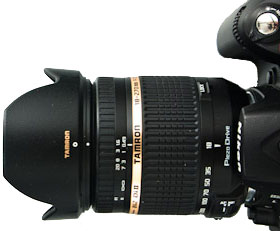 Tamron 18-270mm Di II VC PZD
Tamron 18-270mm Di II VC PZD
The Tamron 18-270mm f/3.5-6.3 Di II VC PZD is the A to Z of lenses. This one lens offers everything you could need from a lens in one small package. It weighs just 450g and is just 96mm tall, so it fits in a small camera bag and is easy to carry around all day. This makes it an ideal travel lens and, with its 18-270mm range, it's capable of covering just about any eventuality so you won't get caught short.
My project, to shoot subjects that form letters of the alphabet, is a simple idea for a theme but can be a challenge to find certain letters. An easy one is 'O' and I found this almost as soon as I set off.
This one wasn't a challenge for the lens either. It was a floor light for the City's war memorial statue. All I had to do was stand over it, centre the lens and adjust the zoom. With O in the bag I set off to find the other 25 letters.
I wandered down through one of the small gardens and spotted an empty flower bed which was a good choice for the letter D. This needed the lens to be set slightly wide as I couldn't get enough height from the ground.
Some letters will jump out of the subject at you with ease - A, X and H came soon after.
A is the corner of a theatre building. I had to use the longer end of the zoom and here the VC (Vibration Compensation) came in ensuring I could hand hold at the longer focal length. X was part of a grid on the road indicating keep clear. I used the zoom to frame the letter out of the larger grid. H is a pair of supporting posts for the electric tram cables. To get the H shape I had to shoot a distant pair of posts and the lens was used at full extent. Again the VC helped here.
But then I started to struggle. I found it easier to think about one letter at a time so my mind could work harder allowing my eyes to hunt out the letters. Time to get organised. I wrote all the letters down, crossed off the five I'd found and then set about finding the others, one by one.
At the end of the afternoon the car park ticket had run out and I'd failed my challenge. I only had 23 of the 26 letters on the memory card. The 18-270mm on the other hand had been a total success letting me capture the near and far, the small and large, the straight and the curved, in sunshine and shade. I was very pleased with this lens in all aspects, light weight, versatility and optical performance. While shooting the alphabet I'd also come across many interesting subjects and was able to get each one with ease, from candids using the sneaky long telephoto, to architecture using the wide angle.
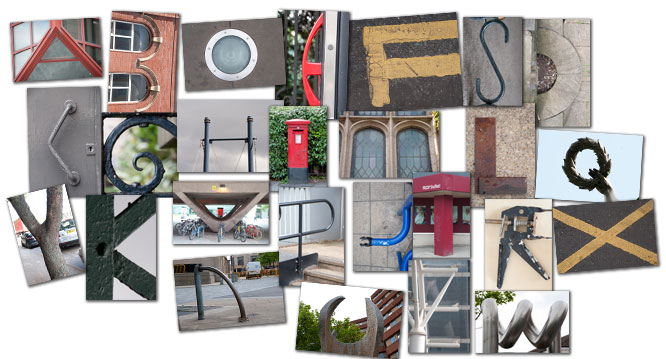
All in all a very enjoyable afternoon, apart from the blisters! In the five hours out I'd walked 20km in total. My legs ached and my feet had blisters, but surprisingly I had no complaints from the shoulder from carrying the lightweight lens... so there's another positive.
When I returned home I adjusted the size, shape and crop of each photo letter using Photoshop and arranged them in a grid to create a rectangular photo of my A to Z.
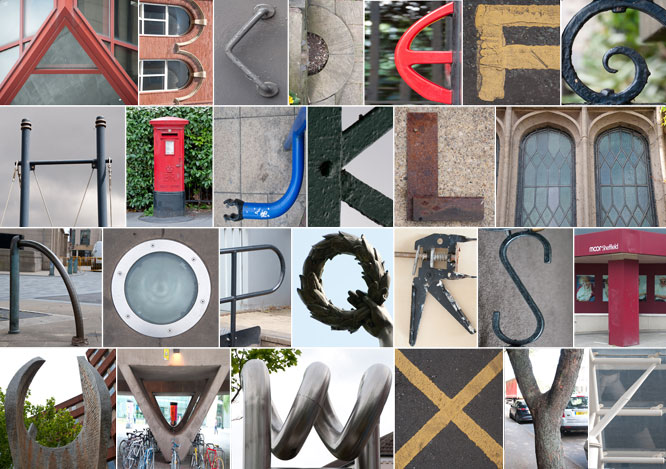
An A to Z of Tamron Lenses
 Tamron lenses like the 18-270mm include an ASPHERICAL LENS element. This is glass with a more complex surface profile which is designed to replace multiple elements, while also reducing spherical aberrations. The benefit is a lens with reduced size and weight along with improved optical quality. Tamron lenses like the 18-270mm include an ASPHERICAL LENS element. This is glass with a more complex surface profile which is designed to replace multiple elements, while also reducing spherical aberrations. The benefit is a lens with reduced size and weight along with improved optical quality. | 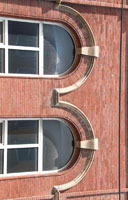 The lens' diaphragm is constructed with a number of BLADES that adjust to form the aperture. This controls the amount of light passing through the lens to the camera's sensor (or film). The 18-270mm has seven which make a good shape to out of focus highlights. The lens' diaphragm is constructed with a number of BLADES that adjust to form the aperture. This controls the amount of light passing through the lens to the camera's sensor (or film). The 18-270mm has seven which make a good shape to out of focus highlights. | ||
 Due to the advanced design the 18-270mm VC PZD is COMPACT and also the World's lightest 15x zoom lens weighing in at just 450g. Due to the advanced design the 18-270mm VC PZD is COMPACT and also the World's lightest 15x zoom lens weighing in at just 450g. | 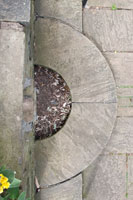 Di Stands for DIGITALLY INTEGRATED DESIGN – Tamron lenses in this class have had lens coatings optimised to minimise ghosting and flare when used on digital cameras. Di II lenses go a stage further by being designed exclusively for cameras with the smaller APS film sensor. Di Stands for DIGITALLY INTEGRATED DESIGN – Tamron lenses in this class have had lens coatings optimised to minimise ghosting and flare when used on digital cameras. Di II lenses go a stage further by being designed exclusively for cameras with the smaller APS film sensor. | ||
 All lenses are made up of a number of optical pieces of glass that are arranged in groups to allow light to pass through in an ideal path and form an image on the camera's sensor (or film). The individual pieces of glass are known as ELEMENTS. All lenses are made up of a number of optical pieces of glass that are arranged in groups to allow light to pass through in an ideal path and form an image on the camera's sensor (or film). The individual pieces of glass are known as ELEMENTS. | 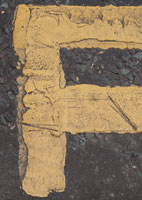 For a lens of this range it's impressive that the FILTER THREAD size of this Mk II version is just 62mm - the older version was 72mm! For a lens of this range it's impressive that the FILTER THREAD size of this Mk II version is just 62mm - the older version was 72mm! | ||
 The individual glass elements of a lens are assembled in collections know as GROUPS. The grouping is usually decided by computer to ensure light travels through efficiently and maintains maximum quality on the camera's sensor (or film). The individual glass elements of a lens are assembled in collections know as GROUPS. The grouping is usually decided by computer to ensure light travels through efficiently and maintains maximum quality on the camera's sensor (or film). | 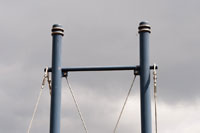 The 18-270mm lens is responsive and focuses fast on the subject thanks to the HIGH SPEED ultrasonic motor. The 18-270mm lens is responsive and focuses fast on the subject thanks to the HIGH SPEED ultrasonic motor. | ||
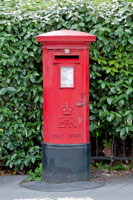 Some lenses have an outer focusing mechanism which means the front optic rotates. This is bad if you're using filters such as polarising and graduates where the position is vital. The 18-270mm has INTERNAL FOCUSING (IF) so the front stays in a fixed position. This becomes even more important now when using filters in the video mode. Some lenses have an outer focusing mechanism which means the front optic rotates. This is bad if you're using filters such as polarising and graduates where the position is vital. The 18-270mm has INTERNAL FOCUSING (IF) so the front stays in a fixed position. This becomes even more important now when using filters in the video mode. |  Your friends will be JEALOUS when they see what you can do with this lens! OK a bit tenuous, but I was stuck for a lens specific word that began with J! Your friends will be JEALOUS when they see what you can do with this lens! OK a bit tenuous, but I was stuck for a lens specific word that began with J! | ||
 The 18-270mm can be crowned the KING of lenses thanks to its incredible zoom range, fine performance and compact/lightweight size. The 18-270mm can be crowned the KING of lenses thanks to its incredible zoom range, fine performance and compact/lightweight size. |  LOW DISPERSION glass, abbreviated to LD, is a type of glass used in Tamron lenses that is included to reduce chromatic aberrations and prevent colour fringing around the subject. LOW DISPERSION glass, abbreviated to LD, is a type of glass used in Tamron lenses that is included to reduce chromatic aberrations and prevent colour fringing around the subject. | ||
 The 18-270mm has a 1:3.8 maximum MAGNI-FICATION ratio throughout the focal length range, which helps when photographing close-up subjects such as flowers. The 18-270mm has a 1:3.8 maximum MAGNI-FICATION ratio throughout the focal length range, which helps when photographing close-up subjects such as flowers. |  A NORMAL lens (standard lens) is classed as a lens with a magnification similar to the human eye. The 18-270mm includes this “normal” focal length, but goes about three times as wide and six times more magnified. A NORMAL lens (standard lens) is classed as a lens with a magnification similar to the human eye. The 18-270mm includes this “normal” focal length, but goes about three times as wide and six times more magnified. | ||
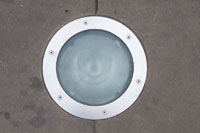 Interchangeable lenses like the 18-270mm have an OPTICAL ZOOM range. Sometimes you can get similar range from a digital camera but it's often digitally created. Interchangeable lenses like the 18-270mm have an OPTICAL ZOOM range. Sometimes you can get similar range from a digital camera but it's often digitally created. |  PIEZO DRIVE, marked as PZD on a lens, is technology behind the silent focusing system of Tamron lenses. See the video with full explanation here Operating Principles of the PZD PIEZO DRIVE, marked as PZD on a lens, is technology behind the silent focusing system of Tamron lenses. See the video with full explanation here Operating Principles of the PZD | ||
 The 18-270mm is QUIETER than a whisper thanks to the Piezo drive technology. This makes it useful for nature photography and candids in quiet places where a normal focussing mechanism would be making whirring noises. The 18-270mm is QUIETER than a whisper thanks to the Piezo drive technology. This makes it useful for nature photography and candids in quiet places where a normal focussing mechanism would be making whirring noises. |  RESOLUTION is the lens' ability to record detail sharply, often referred to as resolving power. RESOLUTION is the lens' ability to record detail sharply, often referred to as resolving power. | ||
 SUPERZOOM is a designation for a lens with a really wide range of focal lengths. The Tamron 18-270mm lens fits in this category along with Tamron's 28-200mm and 28-300mm. SUPERZOOM is a designation for a lens with a really wide range of focal lengths. The Tamron 18-270mm lens fits in this category along with Tamron's 28-200mm and 28-300mm. |  TAMRON is one of the leading independent lens brands founded in 1950 with lenses for all popular SLR makes. Tamron were the first manufacturer to mass produce a zoom lens 50 years ago in 1961. TAMRON is one of the leading independent lens brands founded in 1950 with lenses for all popular SLR makes. Tamron were the first manufacturer to mass produce a zoom lens 50 years ago in 1961. | ||
 The motors used in the Tamron lens are powered by ULTRASONIC vibration so the operation is silent, faster and precise. The motors used in the Tamron lens are powered by ULTRASONIC vibration so the operation is silent, faster and precise. | 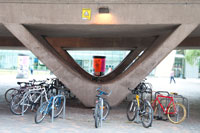 The 18-270mm has a VC (VIBRATION COMPEN-SATION) designation, which means it can reduce camera shake by up to four stops. This is thanks to gyro sensors that detect vibration and adjust the VC lens element so it stays parallel to the image plane to compensate for any movement. The 18-270mm has a VC (VIBRATION COMPEN-SATION) designation, which means it can reduce camera shake by up to four stops. This is thanks to gyro sensors that detect vibration and adjust the VC lens element so it stays parallel to the image plane to compensate for any movement. | ||
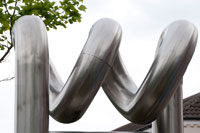 With a WEIGHT of 450g the 18-270mm is 100g lighter than its predecessor and quite a feat for a lens with such an impressive zoom range. With a WEIGHT of 450g the 18-270mm is 100g lighter than its predecessor and quite a feat for a lens with such an impressive zoom range. |  X is the magnification ration of the zoom, in the 18-270mm that's 15x. This is the largest ratio available and introduced by Tamron in 2008 on their original 18-270mm. X is the magnification ration of the zoom, in the 18-270mm that's 15x. This is the largest ratio available and introduced by Tamron in 2008 on their original 18-270mm. | ||
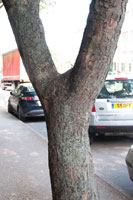 YES is the answer to the question... Should I buy this lens? YES is the answer to the question... Should I buy this lens? | 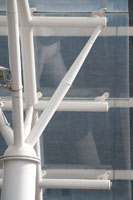 The ZOOM RANGE is the focal length range from one extreme to the other. In this case 18mm wide-angle right up to 270mm telephoto. The bigger the range the more versatile the lens. Usually that means heavier and bulkier, but not in the case of this 18-270mm. The ZOOM RANGE is the focal length range from one extreme to the other. In this case 18mm wide-angle right up to 270mm telephoto. The bigger the range the more versatile the lens. Usually that means heavier and bulkier, but not in the case of this 18-270mm. | ||
To see the 4.5/5 star review of the Tamron 18-270mm lens on ePHOTOzine look here: Tamron 18-270mm lens test.
For details of the Tamron 18-270mm f/3.5-6.3 Di II VC PZD visit Tamron's Website
Add your message
Login required
Please login here or if you've not registered, you can register here. Registering is safe, quick and free.
Please login here or if you've not registered, you can register here. Registering is safe, quick and free.
photodo Stats
1102 lenses
428 MTF tests
74 in-depth photodo reviews
100+ users join each day
Help the lens community by reviewing or rating a lens today via our lens search
428 MTF tests
74 in-depth photodo reviews
100+ users join each day
Help the lens community by reviewing or rating a lens today via our lens search
Latest Lens Reviews
- Chinon 28mm f/2.8 Vintage Lens Review
- Canon EF 70-200mm f/4L IS II USM Lens Review
- Samyang AF 85mm f/1.4 EF Review
- Sigma 70mm f/2.8 DG Macro Art Review
- Samyang AF 24mm f/2.8 FE Review
- Meike 50mm f/1.7 Review
- Tamron 70-210mm f/4 Di VC USD Review
- Lensbaby Burnside 35mm f/2.8 Review
- Asahi Super Takumar 50mm f/1.4 Review
- Asahi Super-Multi-Coated Takumar 135mm f/3.5 Review
